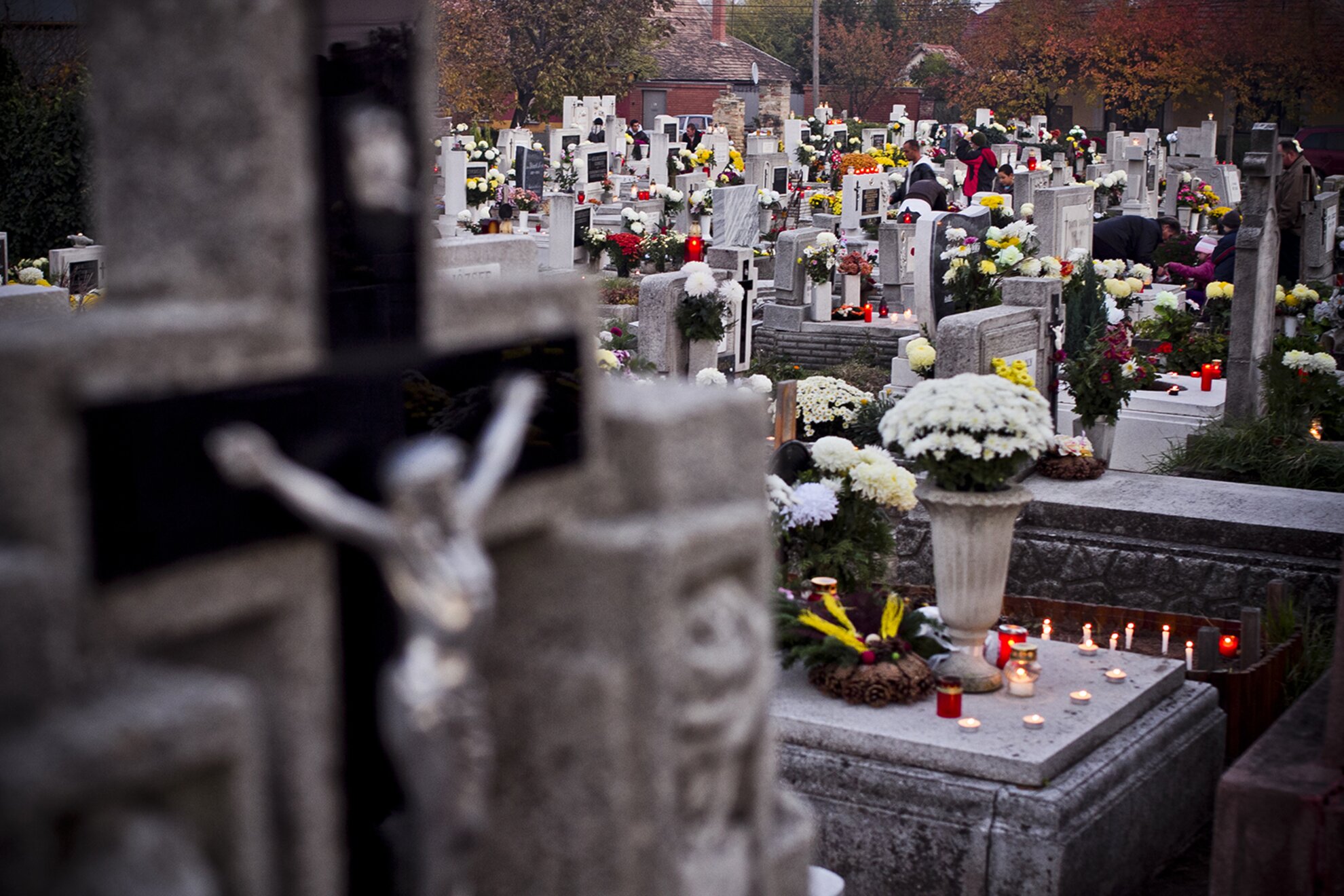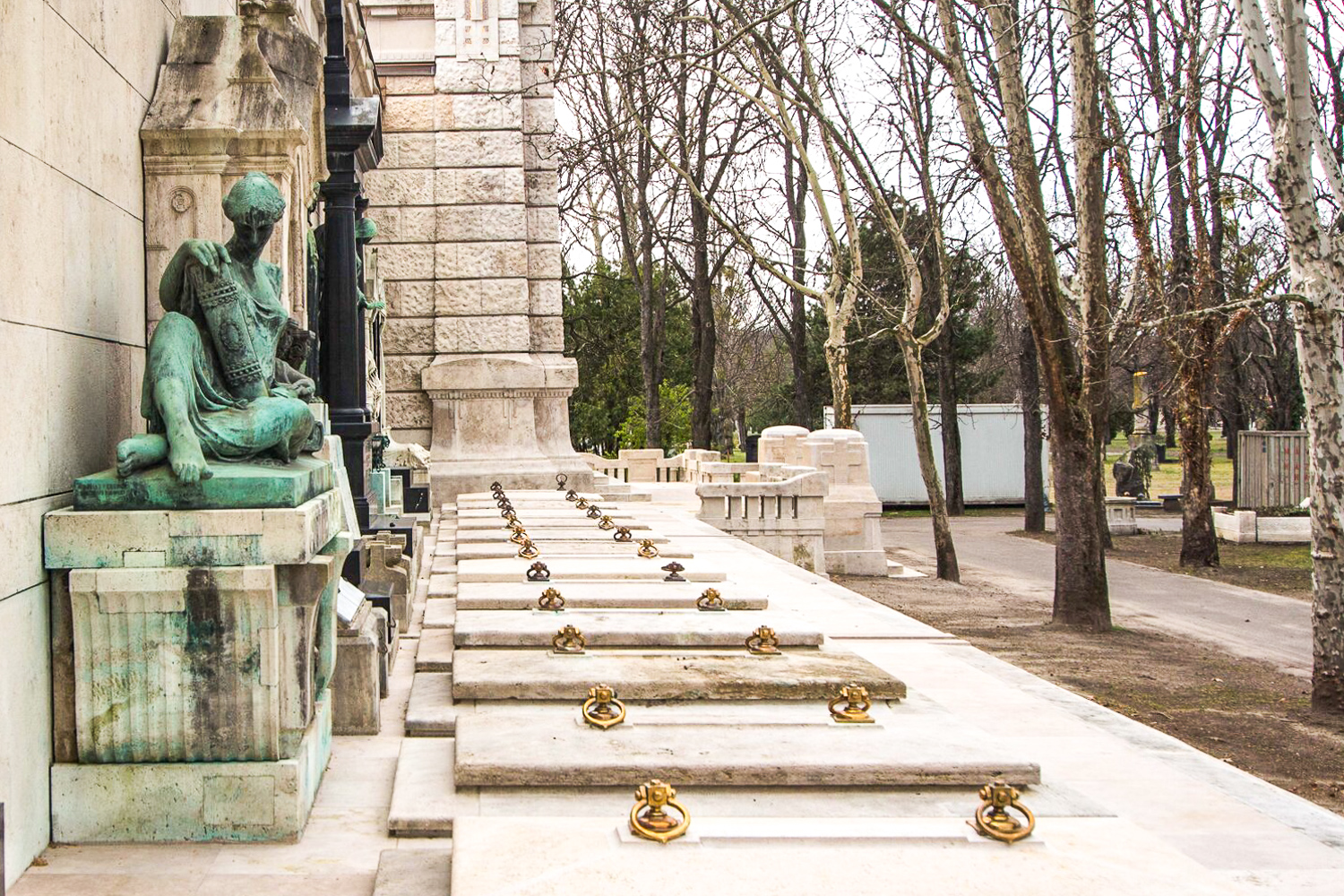
There are four cemeteries in Budapest which dwarf all the
others: Kerepesi, housing statesmen Ferenc Deák, Kossuth Lajos and other key national figures; Farkasréti, with famous composers like Béla Bartók and numerous Olympians; Kozma utca
Jewish Cemetery, one of the largest of its kind in Europe; and
the neighbouring New Public Cemetery, which is still in use today.
On 1 November, many visit these graveyards to place commemorative
candles and seasonal chrysanthemums, and remember loved ones and notable citizens of
yesteryear. For those without friends or family buried here, the occasion offers the chance to discover Budapest's most atmospheric landmarks surrounded by autumn leaves and candlelight. Check out these videos
below to find out more and see how each of these cemeteries look.
Kerepesi
Kerepesi stands as the most recognisable of Budapest's cemeteries, often likened to Père-Lachaise in Paris. From statesmen and legislators, to artists, scientists, revolutionaries and even fallen Soviet soldiers who died here during World War II, Kerepesi is filled with famous names. The stately mausoleums and ornate tombs attract visitors daily, and it's a great way to immerse yourself in Hungarian history. Located ten minutes from Keleti, Kerepesi is an easy green escape from the bustle of the city. We covered the cemetery in full detail earlier in the year.
Jewish Cemetery on Kozma utca and the New Public Cemetery
The Jewish Cemetery on Kozma utca and the New Public Cemetery are neighbours, each a short walk from the other. The first is one of the largest of its kind in Europe, housing some of the most breathtaking tombs. Unfortunately, the cemetery has fallen into a state of disrepair, with hungry vines creeping over once majestic mausoleums, and crumbling artwork adding a forlorn element to the grandeur. There is an effort in place to restore the graveyard: Friends of Budapest Jewish Cemetery always welcome donations.
The New Public Cemetery is one of the largest in Europe. Over three million people have been buried here since 1886! The cemetery is truly huge, and houses many famous Hungarians, including the martyrs of the 1956 Revolution. While many famous graves can be found here, such as the leader of the Hungarian Uprising Imre Nagy and film director Gábor Bódy, some died in mysterious circumstances under the old régime and their tombs are not marked on the paper maps available at the entrance.
Farkasréti Cemetery
Farkasréti Cemetery, located on the Buda side, marks the final resting spot of famous Hungarians such as composer Béla Bartok, poet Árpád Tóth and economist Károly Keleti, among numerous Olympians and other notables. One of the most remarkable features of the cemetery is the mortuary, designed by famous architect Imre Makovecz. He explained of its construction: “I wanted to make the interiors of the mortuary resemble the inside of a human chest. The ribs were made of hardwood and the coffin is placed where the heart would be”.




